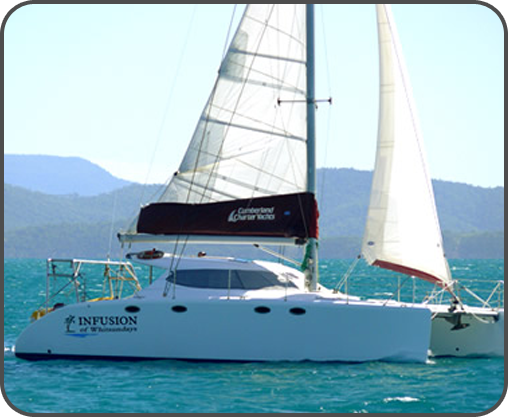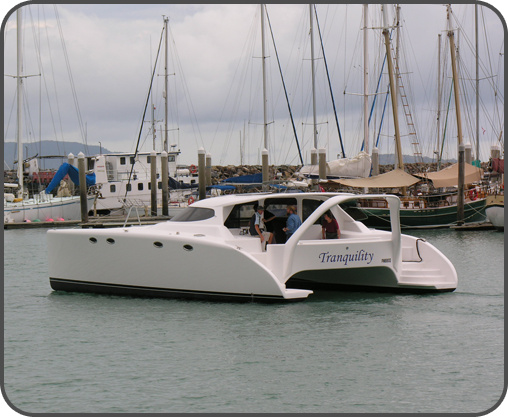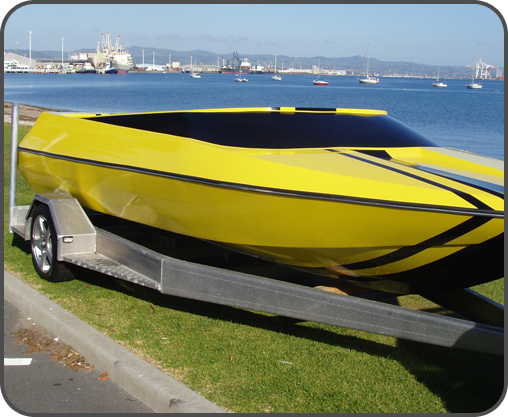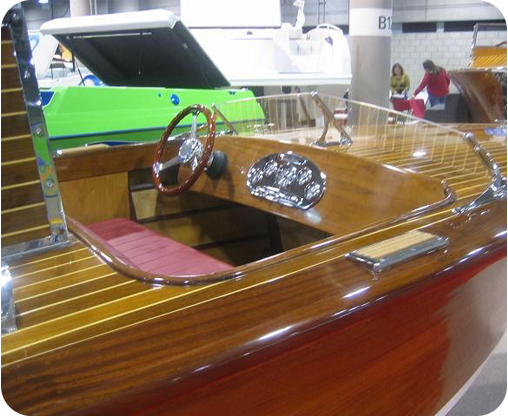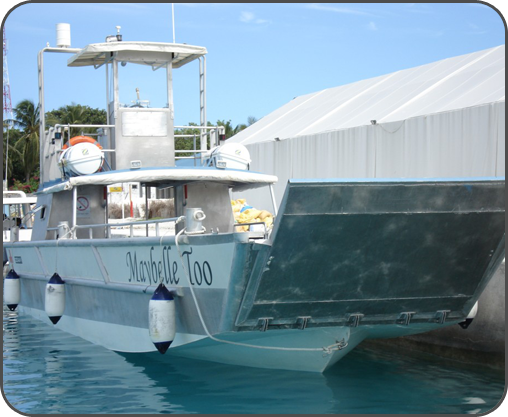Power Boat Hull Types >> PLANING HULL
The planing hull is recognized by the straight run of the chine and buttock lines from midships aft with the chine and the bottom of the hull V generally running parallel to the waterline. The V in section will generally be constant from just aft of midships to the stem The angle between the baseline and the bottom of the V will be in the range of 12 to 20 degrees at the transom. As with other types of hulls there is a great range of planing hull variations. Usually there is a planing strake or flat at the chine and often several planing stakes on the bottom of the hull.
You will often hear the terms 'Deep V' or 'Moderate V'. These terms are meant to convey the amount of V at the transom and in addition to this they do express two different types of hull. A true 'Deep V' hull will have 20 to 24 degrees of V at the transom while a Moderate V hull is one with around 15 degrees of V at the transom. The area in between 16 and 19 degrees can be described either way by the particular designer or builder of the particular boat. Suffice to say that a hull with a V at the transom or 20 degrees or over can be safely classified as a deep V and in my opinion should not be described as a long distance or passagemaking cruising powerboat.
When deep V hulls were introduced they were touted as the last word in planing hull design. These hulls do perform well at high speeds in rough water which is one reason that they are so successful as racing powerboats. Deep V planing hulls, depending on the particular design, can be driven at speeds in excess of 50 knots, however most are designed to cruise at speeds between 30 to 35 knots. Modern computers can accurately estimate the power requirements and speed expectations of all hull types and are especially helpful in the case of deciding the power needed for individual planing hulls.
Planing hulls are very popular, they make great pleasure boats if you are prepared to install sufficient power and pay the larger fuel bills. Planing hulls do not like being operated at low speeds; they throw a most unfriendly bow wave. Planing hulls are not the best of sea boats especially in severe conditions. For local and coastal cruising it is worth noting that a planing hull may allow you to get home before the bad weather arrives. If your type of cruising lends itself to the advantages of a planing and if the disadvantages including high cost of operation do not bother you, then by all means consider this type. In this case a moderate V hull is recommended. On no account select a planing hull if you intend to operate your boat in the canal systems of USA or Europe. These hulls are not suitable if your cruising area is restricted to low speed operation.
Almost all planing powerboat hulls are of single chine configuration and most have 'chine flats' or 'planing chines' and occasionally 'planing strakes' that assist with getting onto, and maintaining the planing attitude. It is the writers' opinion that chine flats are desirable on all planing craft.
Intermediate planing strakes may not be worthwhile on boats intended to perform at less than 30 knots. Planing chines or flats, will start with a small or no flat, at, or near the bow and the width of the flat will gradually increase, until it reaches its widest point somewhere just aft of amidships and maintains this width through to the stern. The efficiency of the 'chine flat,' may be improved by canting it downward by say 2 to 4 degrees throughout its length.




